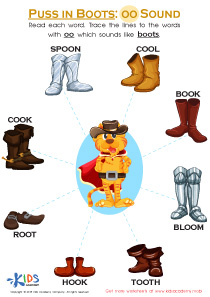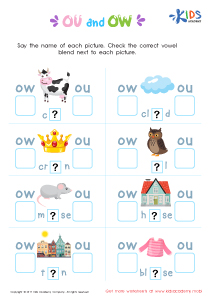Phonics Skills Normal Vowel Blends Worksheets for Ages 4-7
5 filtered results
-
From - To
Unlock the power of reading with our "Phonics Skills Normal Vowel Blends Worksheets" designed for ages 4-7! These engaging worksheets help young learners master essential phonics skills through fun activities centered around vowel blends. Children will explore sounds and spelling patterns, enhancing their reading fluency and comprehension. Tailored to support early literacy development, these resources promote phonemic awareness and build confidence in young readers. Perfect for classroom use or at-home learning, our worksheets make the practice of vowel blends enjoyable and accessible. Get started on your child’s reading journey today and watch them thrive with our expertly crafted phonics materials!
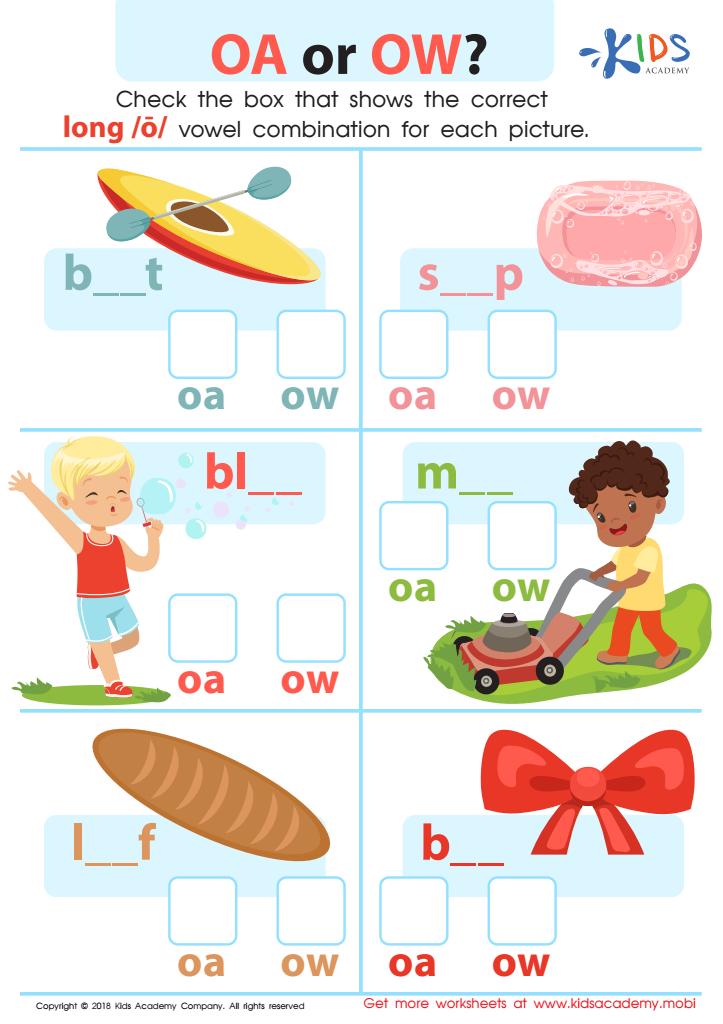

Reading: OA or OW Worksheet
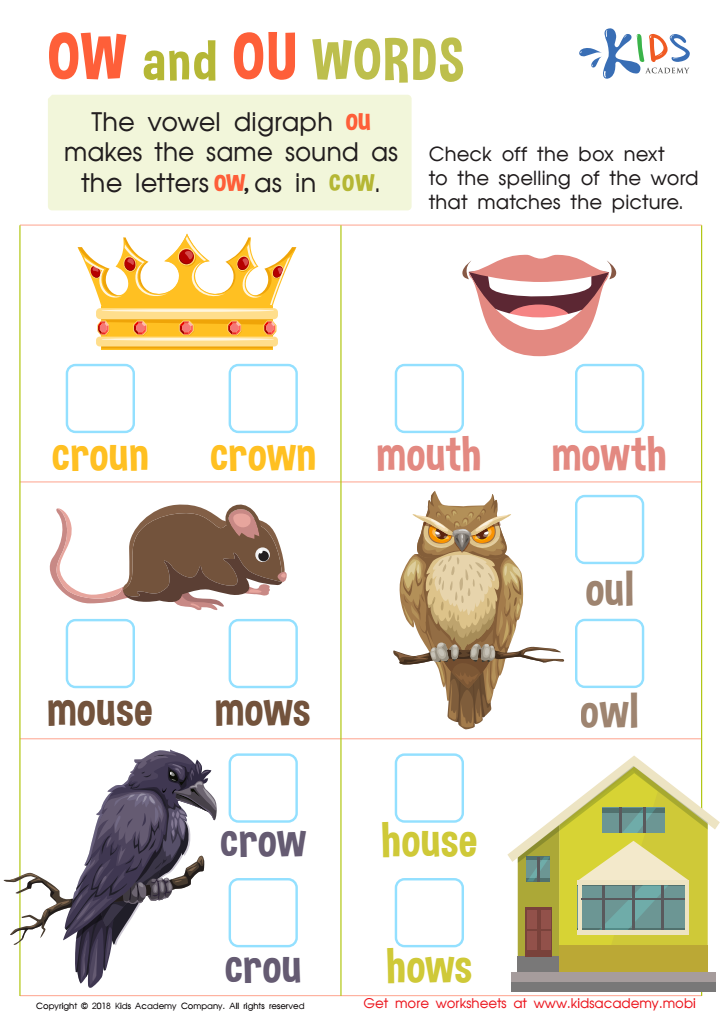

Reading: OW and OU Words Worksheet
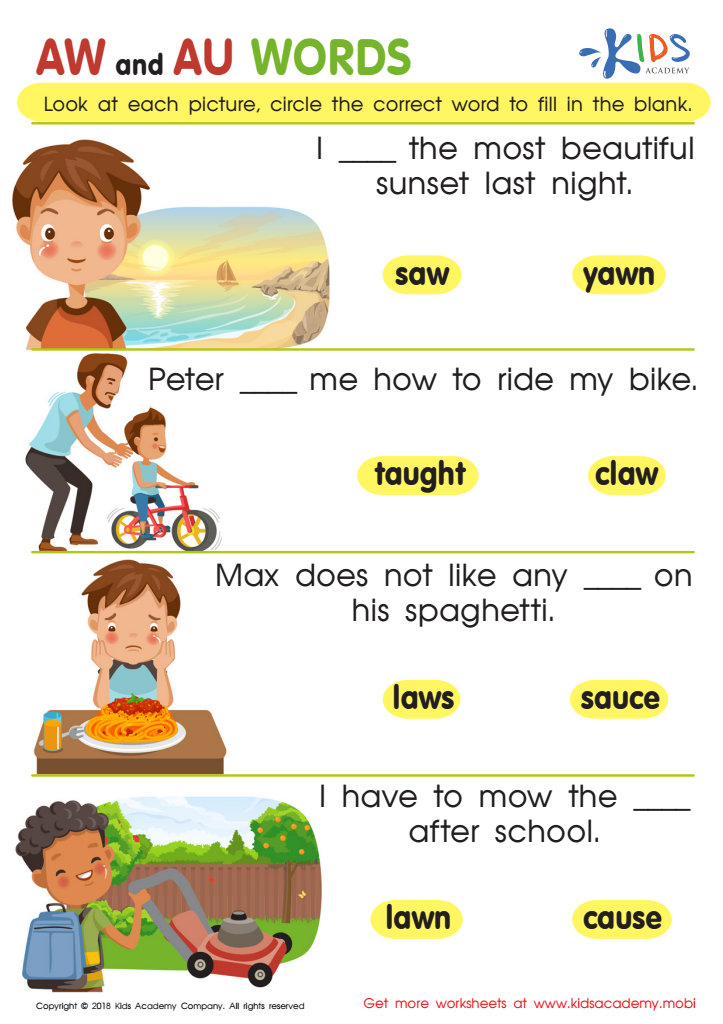

Reading: AW and AU Words Worksheet
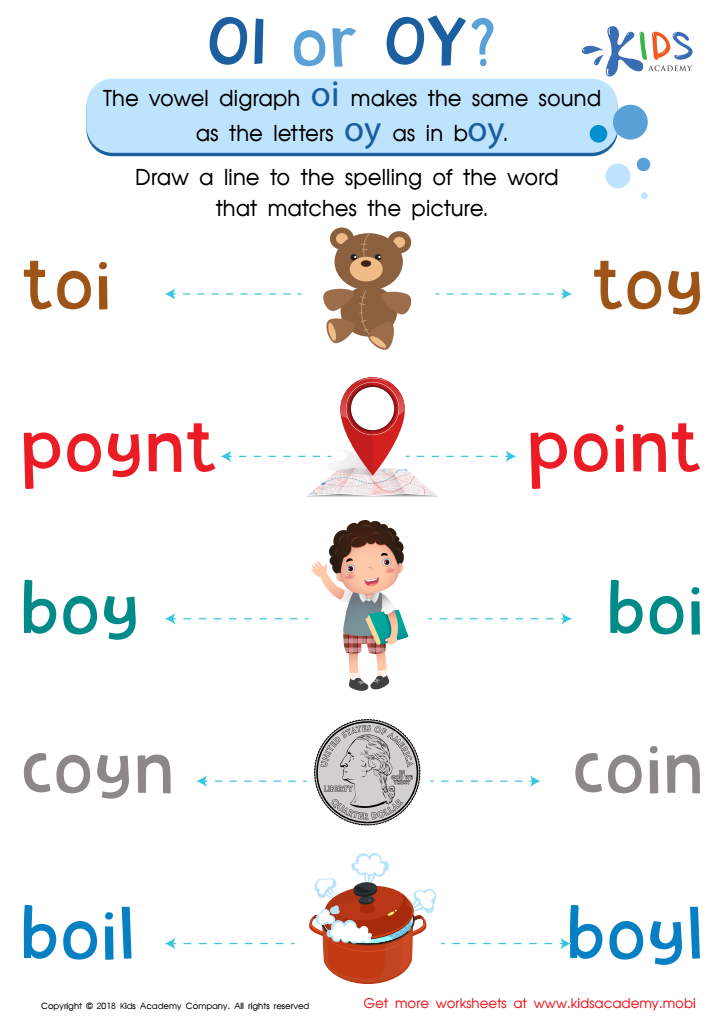

Reading: OI and OY Worksheet


Long and Short E Worksheet
Phonics skills are foundational for developing reading proficiency in young children, particularly those aged 4 to 7. Normal vowel blends, such as those found in the words "cat," "bed," and "hop," are crucial for early literacy. These blends help children decode words, enabling them to sound out unfamiliar terms and improve their reading fluency.
Parents and teachers should prioritize phonics instruction because it forms the basis of effective reading strategies. Children who master normal vowel blends early on exhibit better reading comprehension and vocabulary acquisition. By fostering these skills, educators and parents equip children with the tools to succeed academically and build confidence in their abilities.
Additionally, phonics skills contribute to improving spellings and writing skills, which are essential for overall language development. As young learners grasp these concepts, their ability to communicate both orally and in writing improves significantly. Investing time and resources into teaching children about normal vowel blends can create lifelong readers who are equipped for success in school and beyond. Therefore, making phonics a priority supports not only individual literacy development but also cultivates a love for reading, setting children on a path toward academic achievement and critical thinking skills.
 Assign to My Students
Assign to My Students








